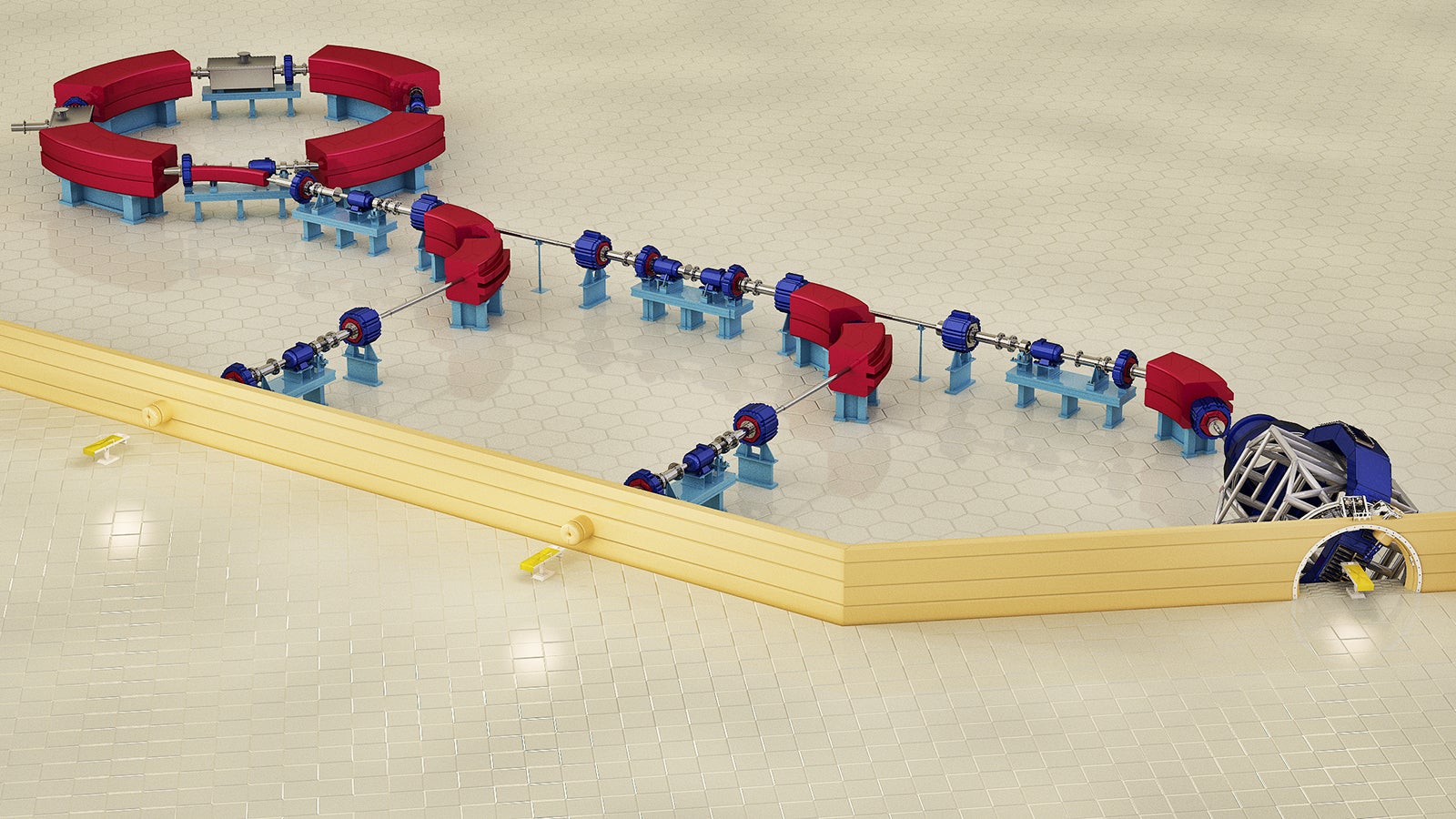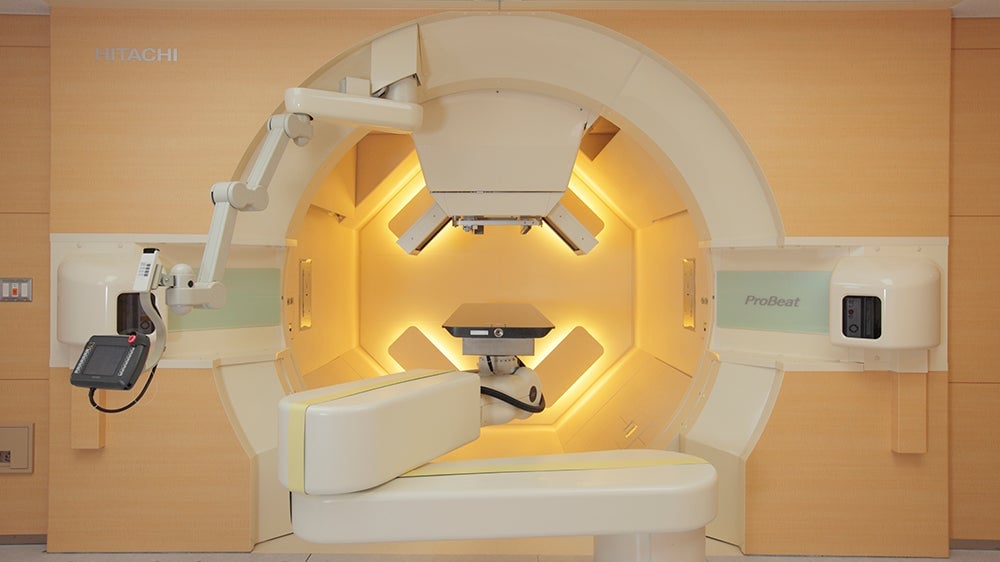The technology behind the Large Hadron Collider is now being used to treat cancer
Surviving cancer today can often be a matter of surviving the cancer treatment itself. Chemotherapy drugs and radiation treatment bombard areas of the body to destroy cancer cells, affecting billions of healthy cells in the process. Why can’t we treat the disease without destroying normal tissues within the body?


Surviving cancer today can often be a matter of surviving the cancer treatment itself. Chemotherapy drugs and radiation treatment bombard areas of the body to destroy cancer cells, affecting billions of healthy cells in the process. Why can’t we treat the disease without destroying normal tissues within the body?
The problem is that current X-ray based radiation treatments deliver their largest dose near the surface of the human body and then gradually diminish while delivering radiation along the entire path of the radiation beam until exiting out the opposite side of the body from where the beam entered, resulting in radiation dose to normal tissues located before and after the area within the body where the cancer cells are located.
Proton Beam Therapy, or PBT, is a kind of radiation treatment that can precisely target a tumor inside the body and deliver its radiation with a focused beam, sometimes called “pencil beam” technology because of how accurately it delivers destructive energy to cancer cells. The advantage of PBT is that it delivers a low amount of cancer killing energy as it enters the body, deposits the majority of cancer killing energy at the exact location of the cancer cells, and then deposits no radiation beyond the location of the cancer cells, completely avoiding radiation dose to tissues located beyond the area where the cancer cells are located within the body.
The goal of PBT is not just to provide efficacious cancer treatment, but also more humane treatment. For patients struggling to deal with the rigors of cancer therapy, PBT is less damaging to normal tissue and easier for the patient to tolerate, because it minimizes damage to normal tissues and organs surrounding the cancer cells being treated within the body.

It allows the elderly, children, and adult patients afflicted in sensitive areas (such as the brain) to receive radiation treatment with fewer short term and long term side effects, usually avoiding the need to temporarily stop giving treatment, due to side effects that can occur during the course of treatment. This means the days needed to complete a course, of often 30 or more treatment days, can be given without interruption.
Numerous technological breakthroughs have made this technology a reality for many patients needing cancer treatment around the world. The hunt for the God Particle was not only a breakthrough in our understanding of theoretical physics, it made way for the technology behind the synchrotron, a central feature of the Large Hadron Collider. Synchrotrons have long been used to accelerate protons and ions in scientific research–most notably in the search for the Higgs-Boson particle–but today, compact versions are harnessed in PBT machines to help precisely focused proton beams eradicate cancer cells.
Historically, these machines have been large, intimidating, expensive, and complex to operate, so were not offered as a cancer treatment solution in most hospitals. But Hitachi has made enormous strides in making them simpler and more economical to operate, as well as more compact and reliable, with an average of 98 percent uptime.
Smaller machines are less intimidating for patients undergoing radiation treatment. Hitachi advances in spot scanning technology and recent reduction of the size of the treatment room and the synchrotron accelerator, have made the Hitachi system more effective and more affordable. The footprint of the new compact proton therapy system is 30% smaller, including bringing the synchrotron accelerator down to a smaller scale, from 23 feet to 16 feet in circumference.
Behind the scenes, Hitachi is developing the first compact carbon capable accelerator, a technology borrowed from the physical sciences, to extend human lives. When accelerated and delivered in a beam, protons release most of their energy when forming a dose absorption peak before coming to an abrupt stop. By adjusting the proton beam energy, the peak can be targeted to the depth of the cancer cells or tumor, no matter where located in the body.
Hitachi’s PBT system has been adopted by many hospitals worldwide, since the first patient was treated on a Hitachi PBT system in 2001 at the Proton Medical Application Research Center at the University of Tsukuba in Japan. In 2006, one of the world’s leading cancer treatment centers, MD Anderson Cancer Center in Texas, began treating patients using Hitachi PBT. Since then the center has treated more than 4,800 patients over the past seven years with excellent results.
The spread of Hitachi’s PBT technology is accelerating across the globe, especially in Japan and the United States. The Nagoya Proton Therapy Center, the Hokkaido University Hospital Proton Beam Therapy Center and other institutions worldwide are using Hitachi PBT systems. Today, more hospitals are considering adding Hitachi PBT to their cancer treatment arsenal, because of simpler system maintenance, lower operating cost and smaller size. It’s all part of Hitachi’s goal to make the future of healthcare more comfortable, affordable, accessible, and user-friendly for people all over the world.
Read more about Hitachi’s vision for the future of healthcare and Social Innovation.
This article was produced on behalf of Hitachi by the Quartz marketing team and not by the Quartz editorial staff.